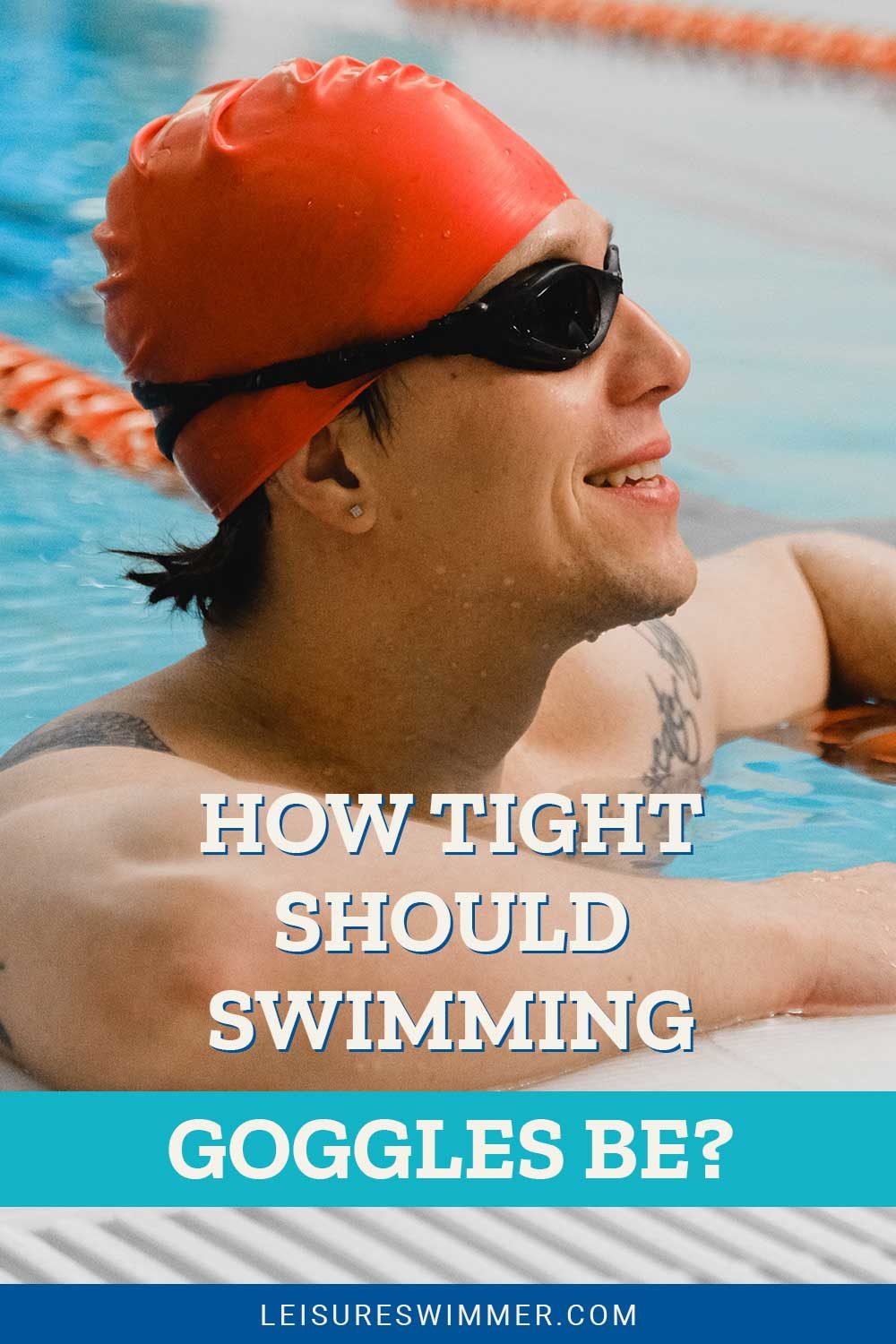How Tight Should Swimming Goggles Be?
We may earn commissions for purchases made through links on our site. Learn more on our about us page.
Goggles should be tight enough to allow for proper suction. Proper suction and fit can be tested in several different ways. If water is not being blocked out, your goggles are likely too loose. Your goggles should also easily adhere to the face.
However, your goggles should not fit too tightly, either. If you are experiencing pain, it is a sign that the goggles are too tight. In addition, your goggles stretch out quickly, and a weak band can also be a sign of ill-fitting goggles.
Keep reading to learn more about how to know if your goggles are properly fitted and more.

How Do You Know if Swim Goggles fit?
Well-fitting goggles match several criteria. Goggles that fit correctly should be able to pass a simple test that a lot of swimmers use:
- Learn all of the ways forward to face the floor
- Press the goggles onto your face until a seal forms
Your goggles should stay in place for at least a couple of seconds. The longer they stay on, the better the fit. If they do not seal, that means the goggles do not fit correctly. This is to test if the goggles fit well enough to the face to block out water, as they are supposed to.

Are Swim Goggles Supposed to be Tight?
Swim goggles should be tight. The purpose of swim goggles is to block out water while swimming. Therefore, the goggles should be tight enough to adhere to the face.
If you have to over-tighten the strap to make the goggles block out water or to make them stay on your face, they are likely ill-fitting. In addition, over-tightening your goggles can actually lead to leaks and breakages over time due to the strain it puts on the goggles.
Goggles should be tight, and if they are not tight enough without putting strain on the goggles, you should seek out a different fit.
How do you Know if your Goggles are Too Tight?
If your goggles are too tight, you will likely experience headaches and pain. In addition, a tight strap digging into the head for long periods can result in this pain. You will also begin to notice a faster deterioration of your goggles from the forced stretch.
Poor-fitting goggles do not just cause simple irritation to a swimmer, however. Over time, the tightness of the goggles can actually cause permanent damage. After long periods of pressure on the face and head, nerve damage can occur.
Why do my Swimming Goggles Leave Marks?
Your swim goggles leave marks due to the suction of the cups. There are a few different reasons why you could be getting goggle marks:
- Ill-fitting goggles
- Old, worn-down goggles
- The natural habits of your skin
For some people, goggles are simply caused by the goggles themselves. That could be caused by the goggles not fitting correctly or simply the cups inside the goggles being worn down.
Other people naturally get goggle marks due to the sensitivity or moisture levels of the skin.
How to Make it Fit Perfectly
To make your goggles fit perfectly, keep your eyes out for a couple of key factors. First, make sure the goggles adhere to the face properly using the test described above.
The suction should hold for at least several seconds and block out water without causing pain to the face.
Check the comfortability of the nose bridge. The nose bridge seal should be comfortable but, again, should seal out water. Again, try several different types until you find the one that best suits you.
Lastly, tighten the straps until the goggles fit snugly on your face without causing pain. Your goggles should fit the head without over-stretching the straps and allowing for proper suction.
Final Thoughts on How Tight Should Swimming Goggles Be
Goggles should be comfortable for the wearer. Swimmer goggles are about making things easier on a swimmer. Ill-fitting goggles can cause the opposite to occur.
When goggles do not fit correctly, it can lead to difficulties for the swimmer as well as limitations to their abilities. In other words, a good goggle fit is essential for a swimmer’s success.
Take your time finding the correct goggles and ensure their fit. Try different brands, types, and sizes to find what is best for you. Be sure to follow the different criteria above to avoid injury or unnecessary discomfort.


